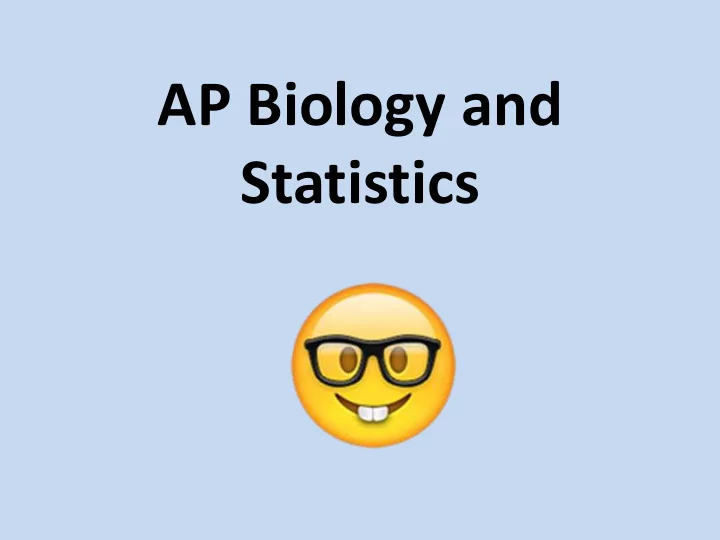

AP Biology and Statistics
Statistics • Statistics help to better understand the meaning of a sample data set • What do these numbers actually mean??
Data Analysis • Data analysis allows you to: – Arrive at conclusions about your data – Make claims about your data – Support arguments using your data – Estimate the reliability of your data – Effectively communicate conclusions about your work to a larger scientific community
Descriptive Statistics • Appropriate descriptive statistics for a data set typically include: – Mean (average) – Sample Size – Standard Deviation – Standard Error
Mean (Average)
Mean (Average) • This formula should be used when you need to calculate the average of a set of values (data points)
Mean (Average) • Calculate the sample means of the two environments, wet and dry
Standard Deviation
Standard Deviation • This formula is used to determine the amount by which your values (data points) typically differ from the mean value • Trying to determine the amount of variation in your data
Standard Deviation
Standard Deviation High Standard Deviation Low Standard Deviation (data points are spread out) (data points are clustered)
Standard Deviation • Calculate the standard deviation for the wet and dry data sets given in Part A
Standard Error
Standard Error • This formula is used to determine the precision of the mean value • You are trying to determine how confident you are in your mean value by considering both the standard deviation and the number of data points
Standard Error • How close is the calculated mean to the true mean of the population?
Standard Error and Error Bars • Determine the confidence in the data collected • 95% confidence intervals are set using + 2 SEM • First graph the means and then add + 2 SEM Error Bars
Error Bars DO NOT Overlap • The data IS statistically significant, for example: • Claim: Sunlight inhibits leaf growth, and therefore the width, of ivy leaves. • Claim: Ivy leaves grow wider in shadier conditions rather than sunny conditions
Error Bars DO Overlap • Data IS NOT statistically significant, for example: • Claim: There is no statistical difference between the average score of boys and girls on a test.
Standard Error • Calculate the standard error for the wet and dry data sets given in Part A
95% Confidence Intervals • Random sampling of the population should produce a mean that falls within + SEM 95% of the time
Recommend
More recommend